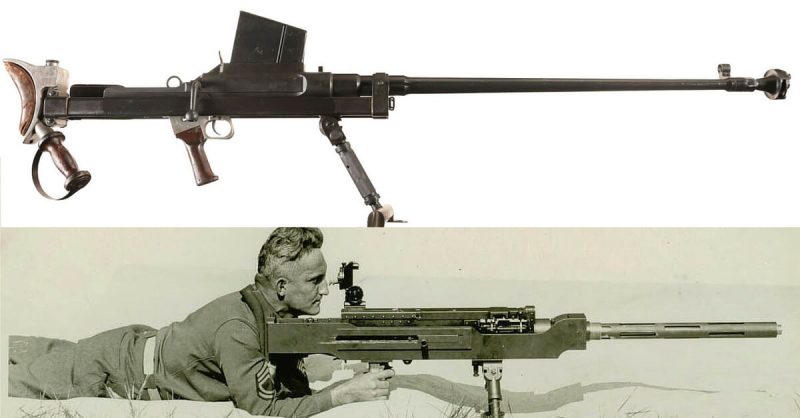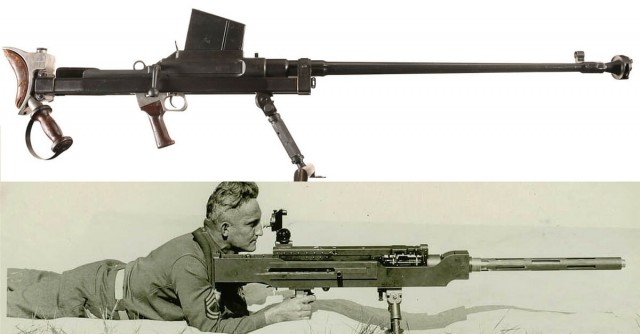Armored tanks were first used on a large scale during World War One. It didn’t take long after their appearance on the battlefield for arms manufacturers to start making anti-tank weapons to deal with them. The German gun-maker, Mauser, made an anti-tank rifle with bullets that could pierce the armor-plating of enemy tanks in the latter days of World War One. They were based on a standard bolt-action rifle. In the end, though, they proved no match against the tank onslaught.
After that war, using samples from captured Mausers, John Browning and the Springfield Armory company in the USA produced a machine-gun with similar armor-piercing bullets. They called this anti-tank weapon the.50 BMG (short for Browning Machine Gun). They competed this project in 1921, with the launch of the Browning M2. It proved to be a very tough weapon with many uses, even against aircraft. This M2 machine-gun is still used by the USA armed forces, as well as those of other countries.
It wasn’t only anti-tank weapons that were being improved in the inter-war years. Tanks themselves had to be strengthened to protect them against this new threat. In the Thirties, they were being built with thicker armour plating. However, anti-tank weapons were being built that could still pierce the thicker plating.
British engineers developed one called the Boys Rifle, after Capt. Boys, who designed it, with a calibre of .55. German engineers built high-velocity 8mm models called the PzB-38 and PzB-39. Finnish engineers developed one called the Lahti L39. There were many others being built.
The USA by now still lacked a light anti-tank rifle. Their M2 had the firepower but with a tripod it had a weight of 128 lbs. A team of three men was needed to handle it.
An attempt was made to make it lighter by replacing the tripod with a forked prop and adding a pistol-like grip and a stock to rest against the shoulder, so that one man could use it. An early version of this experiment added a prismatic sight and reduced the length of the barrel to lighten it. Later versions returned to the longer barrel, which was found to reduce the recoil. Automatic fire would have been difficult to control in guns of this size, so the users would have had short ammunition belts.
However, these modifications ended up making the gun heavier and harder to use than the original M2, so attempts at modification were halted shortly before the USA joined the fighting in World War Two, the Popular Mechanics reports.
As World War Two progressed, the use of modified rifles against tanks was abandoned. Armor plating became thinker and thicker, so that by the middle of the war, it could not be penetrated even by the big-caliber bullets used in anti-tank rifles. Instead, these types of rifles started to be put to use against objects like guard towers, lightly armored vehicles, fuel tankers and airfield installation.
Even today, those are largely the kinds of target that wide-caliber rifles are used for, while a range of other weapons have been developed to attack tanks.

